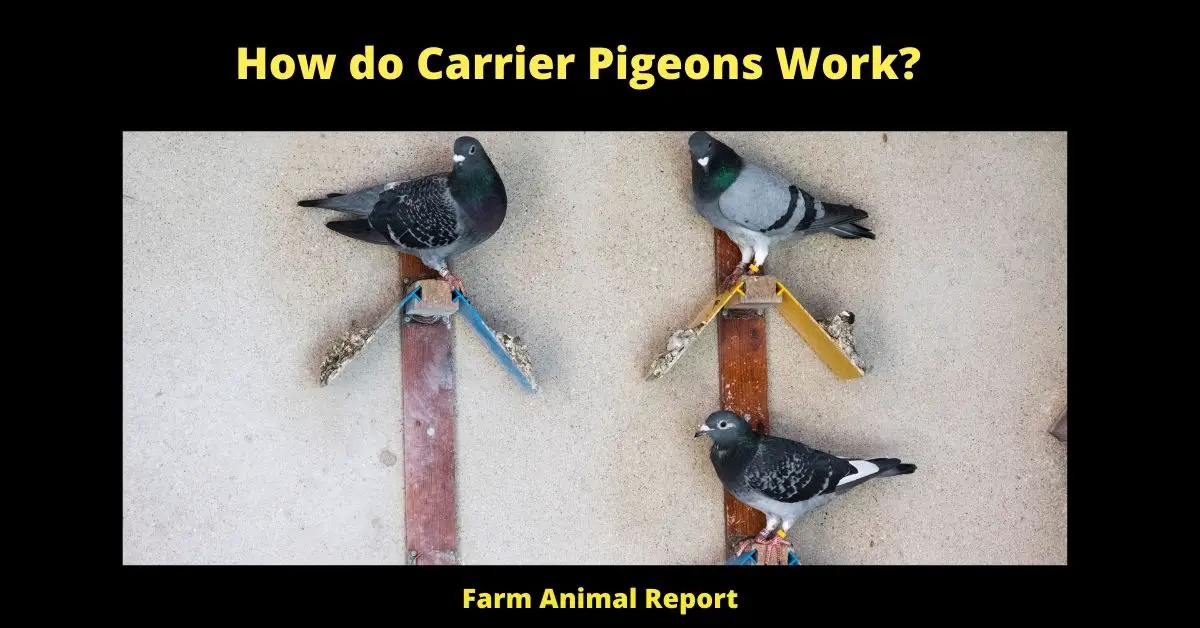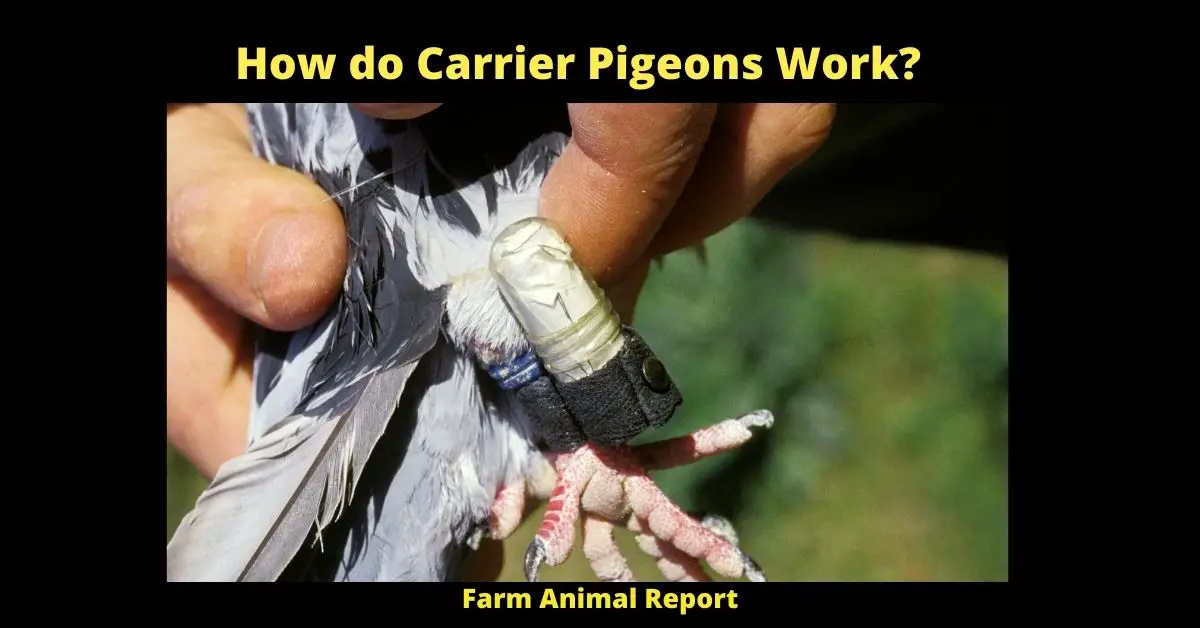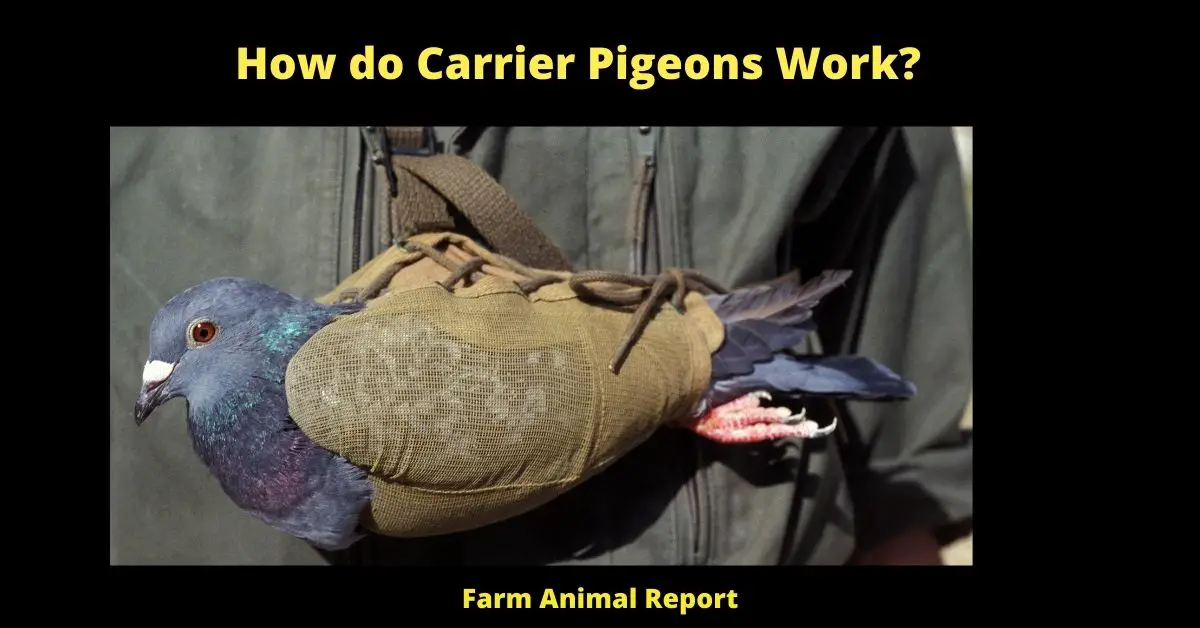From Ancient History Method for delivering messages: small pieces of paper are tucked into the pigeon’s neck or legs, which causes it to fly home. This method is both timely and often undetected. Used during times of War and Postal Messaging
How do Carrier Pigeons Work?
The first thing to know about carrier pigeons is that they are not a type of pigeon. Carrier pigeons are a specific breed of bird with specific skills. The most famous of these birds was named Cher Ami, and he served as a messenger during World War I. He delivered the message “WE ARE ALIVE” from an allied trench near Souain, France on October 4th, 1918 after being shot in the chest by German fire. Jump to How to Start a Pigeon Farm / $1.4 Mil – Bird (with Videos)
How long have Carrier Pigeons been used to Transport Messages?
As early as the 11th century, Carrier pigeons have been used to transport messages. They were used in both World Wars, and are still being used today. Their speed and accuracy make them the perfect messenger for delivering important news. Carrier pigeons can travel up to 150 miles per hour and can navigate their way home even if they’ve been released hundreds of miles away from their nest. Because of their impressive abilities, Carrier pigeons are often called “the Royal Messengers.”
See Amazons Supplies and Educational Resources for Racing Pigeons
Their homing qualities have also been used to train racing pigeons. In fact, the first International Federation for Homing Pigeon Racing was founded in 1878 and is still active today. Carrier pigeons have come a long way since they were first used as messengers over 1000 years ago! How do Carrier Pigeons Work?
Carrier Pigeons have been used in these wars:
- – World War I
- – World War II
- – Korean War
- – Vietnam War
- – Gulf War
- – Afghanistan War
- – Iraq War. Carrier pigeons have been a vital part of military communication for centuries, and will likely continue to be used for many years to come.
Carrier Pigeons have been used in these countries throughout history:
- Rome
- Persia
- Greece
- Britain
- America
- France
- Spain
- Italy
- United States
- Australia
- Belgium
- Brazil
- Denmark
- Germany
- Netherlands. Carrier pigeons have been used in many different countries throughout history, and their usefulness is still evident today.
How is a Carrier Pigeon trained?
Carrier pigeons are typically trained by being placed in a small cage with an opening at the top. The trainers will then place food outside of the cage and wait for the pigeon to fly out and get the food. Once the pigeon has learned to do this, they are then released into a large area where they can fly around and find their way home.
This process is repeated until the pigeon knows how to find its way home from any location. Carrier pigeons can also be trained to carry messages between people. They are taught which houses to go to and how to deliver the message. Carrier pigeons have been used for centuries to relay messages back and forth between people who are unable to communicate otherwise.

How long does it take to train a Carrier Pigeon?
It depends on the bird’s age and experience. Generally, it takes about six weeks to train a young pigeon, while experienced birds may take only a week or two. The training process is relatively simple: the handler starts by getting the bird used to being handled and then gradually introduces new tasks until the desired behavior is achieved.
Some of the things that can be trained include returning to the loft, flying to a specific location, and holding messages.
At what age do you begin Carrier Pigeon Training?
It is never too early to start training your homing pigeon! In fact, some fanciers will train their birds when they are only a few days old. The younger the bird, the easier it is to tame and imprint on its owner. Make sure you have a safe place for your pigeon to live, like an aviary or loft, where it can practice flying home. Start by holding the bird in one hand and releasing it near your loft. As soon as the bird begins flapping its wings, open your hand so it can fly back to safety. Be patient and keep practicing until your pigeon can fly back to you every time.
What is the science behind how a homing Pigeon finds Home?
The way that scientists think that pigeons are able to find a home is they have a magnetic compass, which is connected to the bird’s sense of smell. The bird’s brain can control its ability to absorb different smells and then use that as a sort-of GPS system.
An experiment done by biologist Glenn Northcutt tested this theory in 1971 when he put magnets on two homing Pigeon’s heads, one magnet pointed north while another was reversed so it would point south. He found out that these two birds were not affected at all by their artificial headings due to their natural skills for navigating with smell alone.
Another way scientists believe this happens could be because there is something about how sound travels through air called an acoustic lens effect. This means sounds travel faster near the ground and slower in the air, which could be another way that pigeons are able to judge their location.
When do you begin Carrier Pigeon Training? It is never too early to start training your homing pigeon! In fact, some fanciers will train their birds when they are only a few days old.
The younger the bird, the easier it is to tame and imprint on its owner. Make sure you have a safe place for your pigeon to live, like an aviary or loft, where it can practice flying home. Start by holding the bird in one hand and releasing it near your loft. As soon as the bird begins flapping its wings, open your hand so it can fly back to safety. Be patient and keep practicing until your pigeon can fly back to you every time.
What is the difference between a Homing Pigeon and a racing Pigeon?
Are raised for their ability to find their way home. They are often trained to fly hundreds of miles in a single day, stopping at rest stops along the route where they may be fed and watered. As with human athletes, some pigeons have better track records than others and as such can command higher prices on the bird market (some birds sell for up to $20,000).
What is the difference between an English Carrier Pigeon and a French one? There really isn’t much difference between homing pigeons from different countries although it has been reported that there are more endurance races using French breeds because of their natural ability.
However, this hasn’t stopped British fanciers from participating in long-distance races which take place across France or Europe during major European events.
One main difference between English and French carriers is the way they are trained from a young age. English fanciers will often start training their birds at about four or five weeks old, while the French wait until their pigeons are six or seven weeks old. This is said to be because the French believe that you can’t teach an old dog new tricks – in other words, if the bird hasn’t learned how to fly home by itself before this point then it probably never will!

Racing Pigeons
Racing pigeons are raised for the gambling sport of pigeon racing. The birds are trained and raced for speed, stamina or other reasons that could increase the bird’s value as a racer on the open market.
People who raise pigeons to race usually specialize in one area of competition only such as long-distance flights, sprint races (racing over short distances), etc. However, some fanciers will have both types of pigeons – an elite group used mainly for prized wins at local shows while they keep others to participate in longer distance events like those abroad.
Are Carrier Pigeon Racing Birds any different from Showbirds? A show bird is more likely than not just another name applied to an everyday racing pigeon whose owner wants it recognized by its winning feats at home meets and local shows.
Show Pigeons
Showbirds are often raised for their looks and not so much for their abilities to win long-distance races or loads of prizes at the shows. Show birds with fancy names may be bred from some type of champion racing bird, but they aren’t necessarily going to be better racers than those without a pedigree. The only way you can really tell is by training them yourself in both local meets and longer distance endurance races (to see how far or fast they go) before deciding whether or not it’s worth breeding your pair together if you have mated homing pigeons!
Do Carrier Pigeon Racing Birds need special diets?
Just like any other athlete on an all-natural diet, eating right helps ensure that your birds. Their diet consist of mainly grain, along with some vegetables and a little bit of fruit.
The exact diet will vary depending on what kind of pigeon you have but the general rule is that they should get plenty of protein from their food as well as be given water to drink often (especially in hot weather).
What prices do Racing Pigeons sell for?
A racing pigeon’s value will depend on a number of factors such as the bird’s pedigree, breeding history, wins and losses at races. As with English Carrier pigeons, French ones can command higher prices (some pigeons have been known to sell for up to $20,000).
It is important to note that while some fanciers are willing to pay top dollar for an excellent specimen of their favorite breed it may not be possible or even necessary if you’re just raising birds locally or hoping to get into any kind of long-distance racing event overseas in Europe.
Where are Official Pigeon Races Taking Place Today?
The next big long-distance race is the Georgian Cup Race in Tbilisi, Georgia on September 17th. This race will cover a distance of 650 km and is open to all breeds of pigeons. There are also races scheduled for October 15th (the French Classic) and November 12th (the Great British Classic). For more information on these and other upcoming pigeon racing events, please visit the Racing Pigeon website at:
For Up to Date Events
What Pigeon Breeds are normally used for racing?
There are many different Pigeon Breeds used in racing. In fact, I have no idea how many breeds there actually are. Below they’re listed out with their names and descriptions:
- The White Legged Belgian – This breed has been around since the late 1800s till sometime after World War II when it was thought to be extinct by pigeon fanciers until one of them discovered a small flock that had survived miraculously throughout the war years within Belgium where it came from originally. It’s quite hard for me to understand why this particular race went extinct as well because most pigeons do not just die off without an actual reason or cause behind such but sadly enough these were wiped out completely due in part to the fact that they were not of any particular use to anyone.
- Belgische Blauwen – Blue Wings, a name which I believe is derived from one or two pictures taken centuries ago where it showed up in white only with blue wings instead of black ones like all the others at that time had and since then have been passed on for generations until now when we are left just with this breed alone. Since there aren’t very many of them still alive today, most fanciers you will come across who do race their pigeons would normally mix some more recent breeds such as Beyers and Tipplers into these breeds in order to keep them going.
- The Birmingham Roller – This is a very popular racing pigeon that can be found in many colors and has an interesting way of flying where it tumbles or somersaults through the air as it races. They are normally quite fast and have been known to win many prizes in competitions.
- The English Trumpeter – Another one of my personal favorites, this breed is easily distinguishable by its extremely large body size as well as the long curved neck that almost makes it look like a swan. It’s also called the “King of all Pigeons” due to its impressive stature and is normally used for long-distance racing.
- With a name like that, you would probably be expecting this bird to have some kind of outstanding or flashy features and indeed it does. This is one Pigeon Breed which I’d suggest every fanciers out there should at least try once in their lifetime because just watching these birds fly will mesmerize you for sure!
- Gambler – It was determined by many years worth of studying the various breeds and their characteristics as well as flying patterns that certain pigeons are better suited than others when they were first used primarily in gambling establishments and since then has been bred from generation after another till now where we have Gambler racing pigeons today. They can easily be distinguished by its small body size with short legs but remarkably long wings that are normally black in color. The feathers on its head is also a bit larger than the rest of its body which many think gives it an advantage when it comes to flying because not only does this make them look more intimidating, but since they get plenty of air flowing over their heads as well as behind them at all times, you could almost say that these birds can fly forever if there’s no other obstacles blocking their way!
- The German Short Faced Tumbler – This breed was actually created by crossing two different pigeons together and then letting nature do her job before finally stabilizing through selective breeding where we have today what has come to be known as the “German Tumblers.” These guys can easily be identified by their very short beaks as well as the fact that they always tumble or somersault in the air no matter what direction they are flying in which gives them an advantage over other pigeons during races.
- The Modena – Named after the city it was first discovered in, this is a medium-sized pigeon that comes in many colors and is used mainly for long-distance racing. They have been known to win many prizes throughout the years due to their exceptional flying abilities and can easily outfly most other breeds of pigeons
Final thoughts – How Carrier Pigeons Work?
In Summary – Carrier Pigeons find home by being able to magnetically track their location. They have been used for carrying secret messages in the past. Today they are used as
- Messages
- Racing Pigeons
- Show Pigeons


